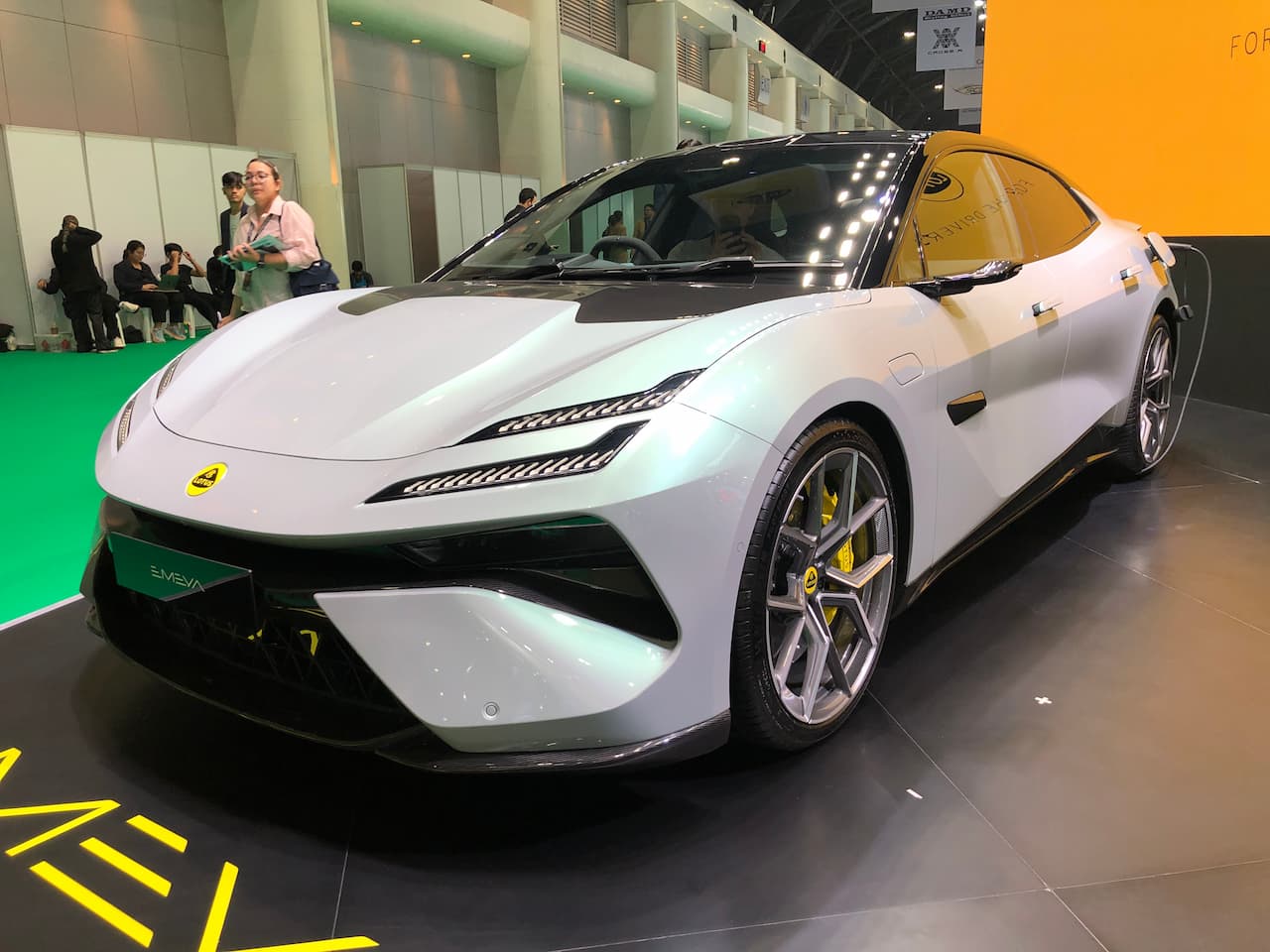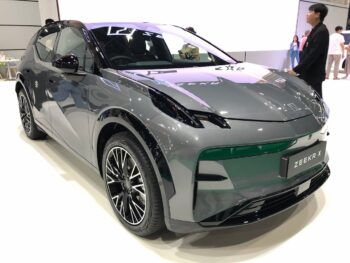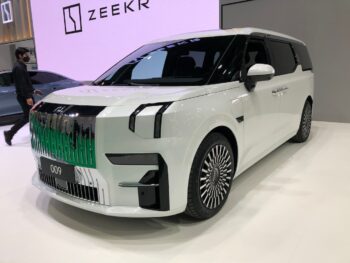The Lotus Emeya, the second family car from China-based Group Lotus, has entered the rapidly expanding segment of large four-door electric GTs. I saw the Porsche Taycan rival on display at the 2024 Bangkok International Motor Show in March and spent a while exploring its design, comfort, space and features in detail. Here’s my experience with the Lotus Emeya:
Design
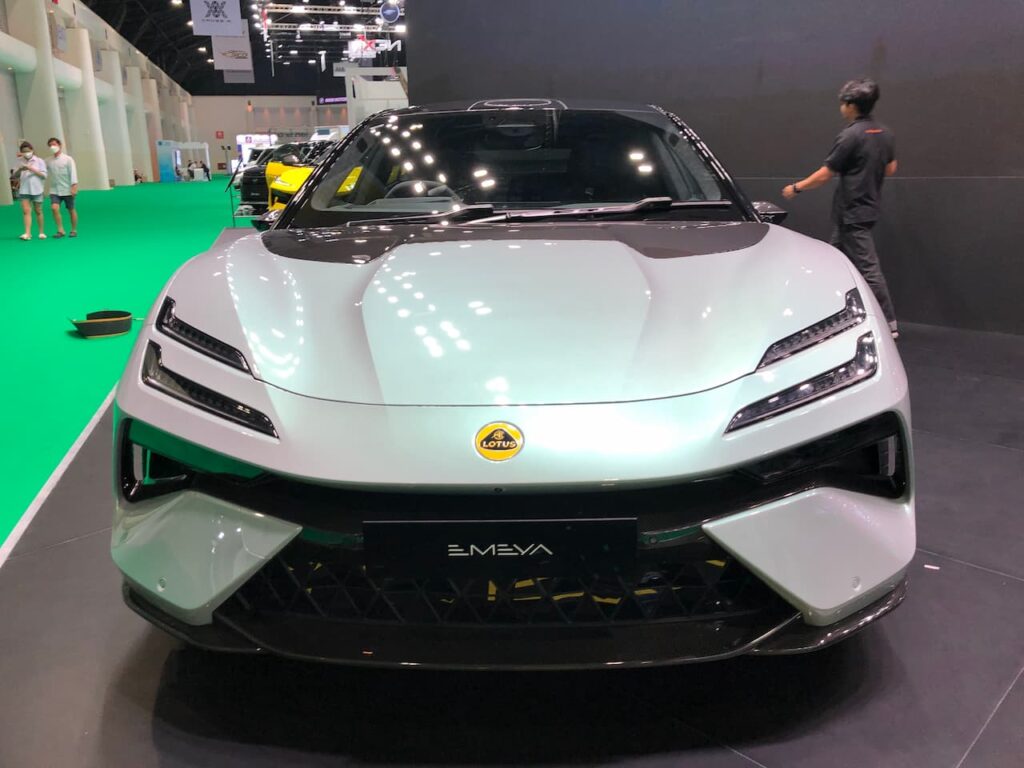
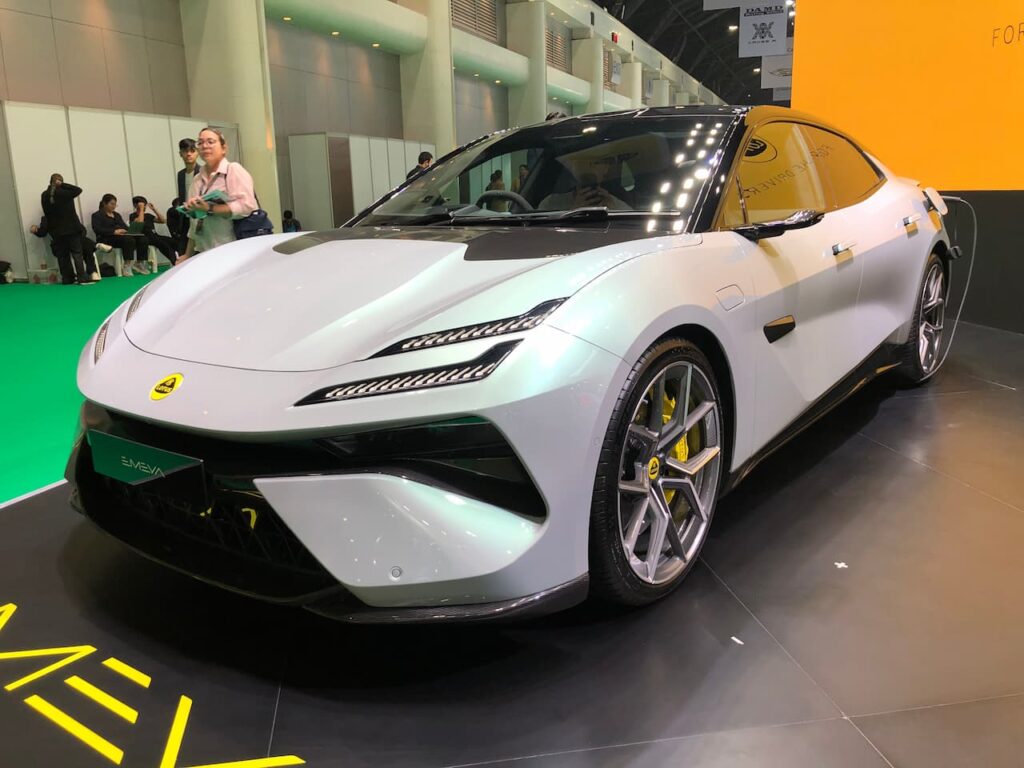
When I saw the Lotus Emeya at the 2024 Bangkok International Motor Show, I felt that it had more muscle and looked bigger than a typical four-door GT. Its athletic demeanor is more pronounced than that of the Audi e-tron GT and Porsche Taycan, which are the closest rivals. Having seen it right after the Eletre, it appeared to me that Lotus had remolded the SUV along with fresh styling to create the Emeya—the similarities between the two models are evident.
I liked the Emeya’s swooping lines, sports car-like fast-sloping hood, smooth surfacing on the doors and quarter panels, and the gentle curve in the beltline. The headlight arrangement, which gives the Emeya a more SUV-like appearance than that of a grand tourer, is amplified by its tall stature, something that I didn’t find appealing. Don’t get me wrong, the Emeya is a striking electric vehicle, and will make heads turn. But does it meet the standards I expect from a GT? For me, the answer is a no.
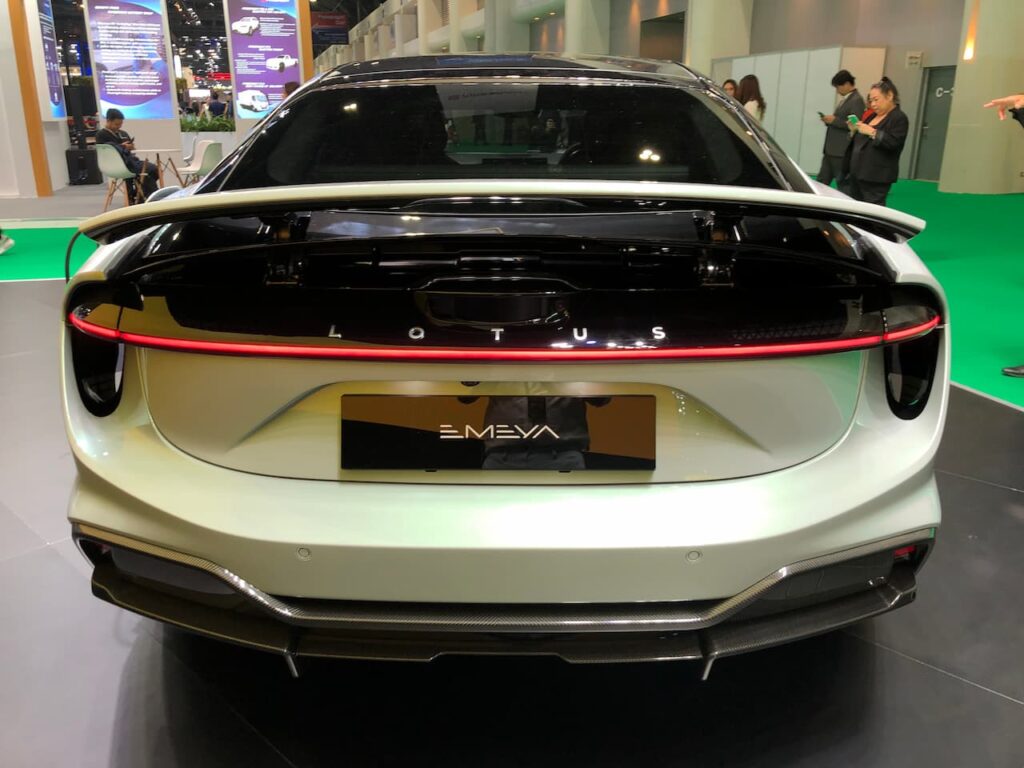
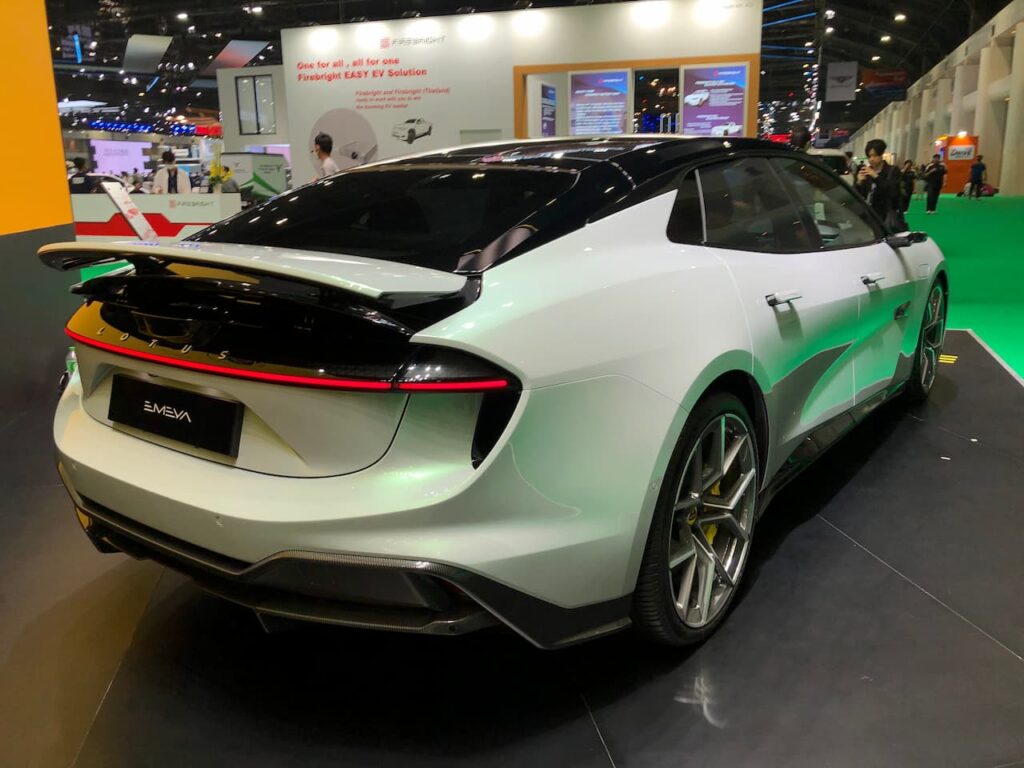
Lotus manufactures the Emeya in Wuhan (Hubei Province), China, and this a well-built electric sedan. After spending some time examining its exterior, I didn’t notice any abnormally large or misaligned panel gaps.
Interior
The Lotus Emeya features electrically operated front and rear doors, making ingress and egress easy. Entering the front posed no problems, but I bumped my head while getting into the back. I think tall people particularly would need to mind their heads here. The driver’s door closed automatically once I pressed the brake pedal.
I’m 5’7” tall, and I had good headroom in the front. There was a gap of about six inches between my head and the headliner, so I think 6’1” or taller people might not be all that comfortable in this car. The relatively high floor affected the under-thigh support, making it average at best. However, the lumbar support posed no issues.
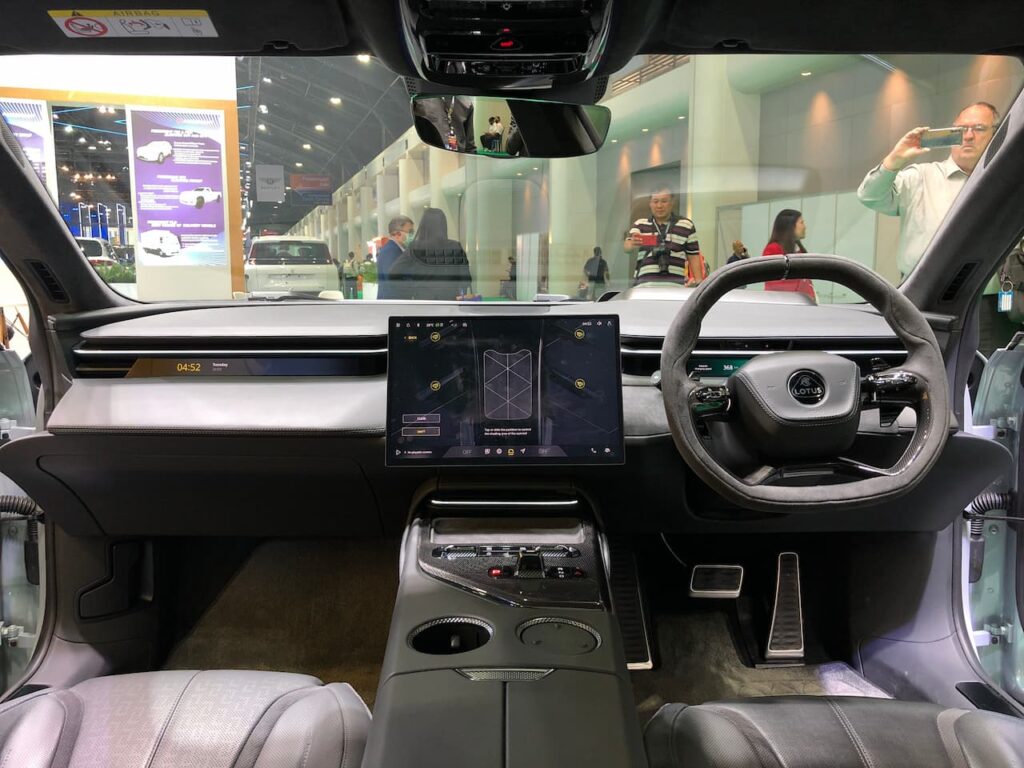
Once settled in the driver’s seat, I glanced around to get a feel of the design and layout. I wasn’t surprised to find the interior almost identical to the Eletre, with similar designs for the dashboard, steering wheel, center console, analog controls, and screens.
The rear visibility was limited, not to say it was unexpected or anything out of the ordinary for this body style. Like the Eletre, the Emeya is available with both regular ORVMs and digital ORVMs, and the unit I reviewed featured the latter. The feed from the cameras was crystal clear and the displays showing it were bright and sharp. The steering wheel looked chunky and felt sporty to hold.
The quality of physical controls like buttons and switches was good, and I felt the same about the upholstery, too. The storage box in the center console was pretty deep, and I think it could be used to keep an iPad mini or Amazon Kindle. The center console’s free storage space was too small to hold a large grocery bag or a handbag.
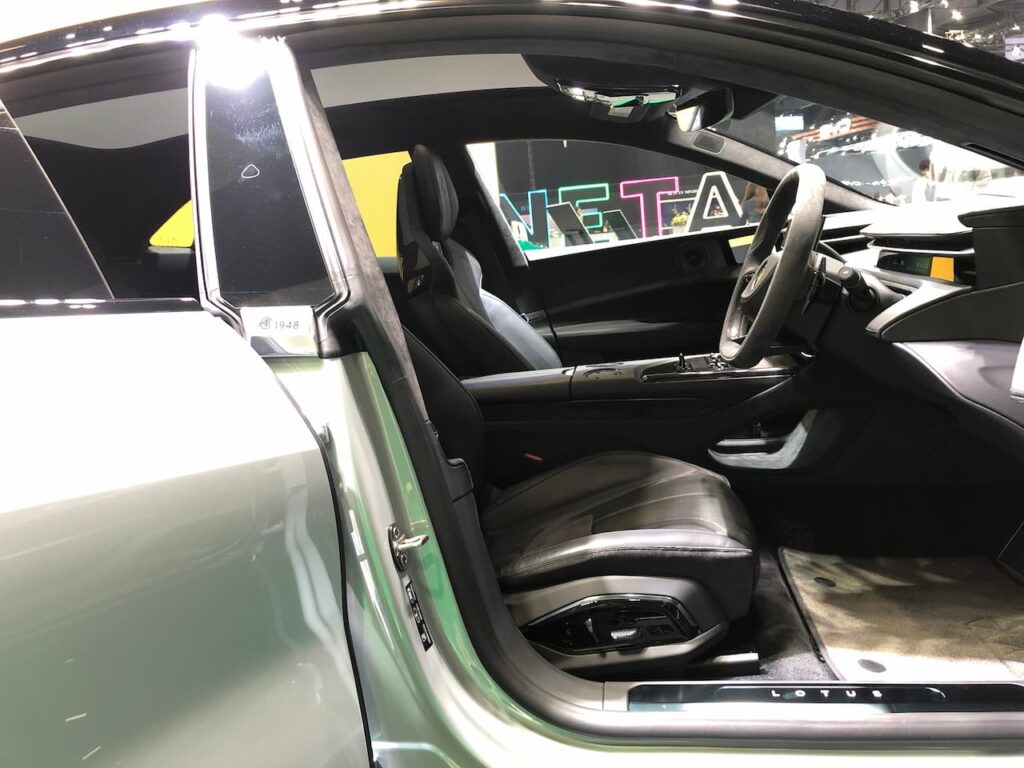
To exit the Emeya, all I had to do was just press a button on the driver-side door and it swung itself open electronically. Closing the door was even simpler; I gave the door a nudge, and it closed electronically. Lotus will sell the Emeya in a 5-seat version with a bench in the rear and a 4-seat version with two sports seats in the rear. The sample I was examining was the 4-seat version, designed for maximum comfort.
Four-door GTs aren’t known to feel very spacious in the back due to their low and fast-sloping rooflines and small rear windows, but the Emeya, reminding me of the first-gen Porsche Panamera, seemed like an exception. When I actually sat in its back, I felt it could accommodate tall passengers comfortably.
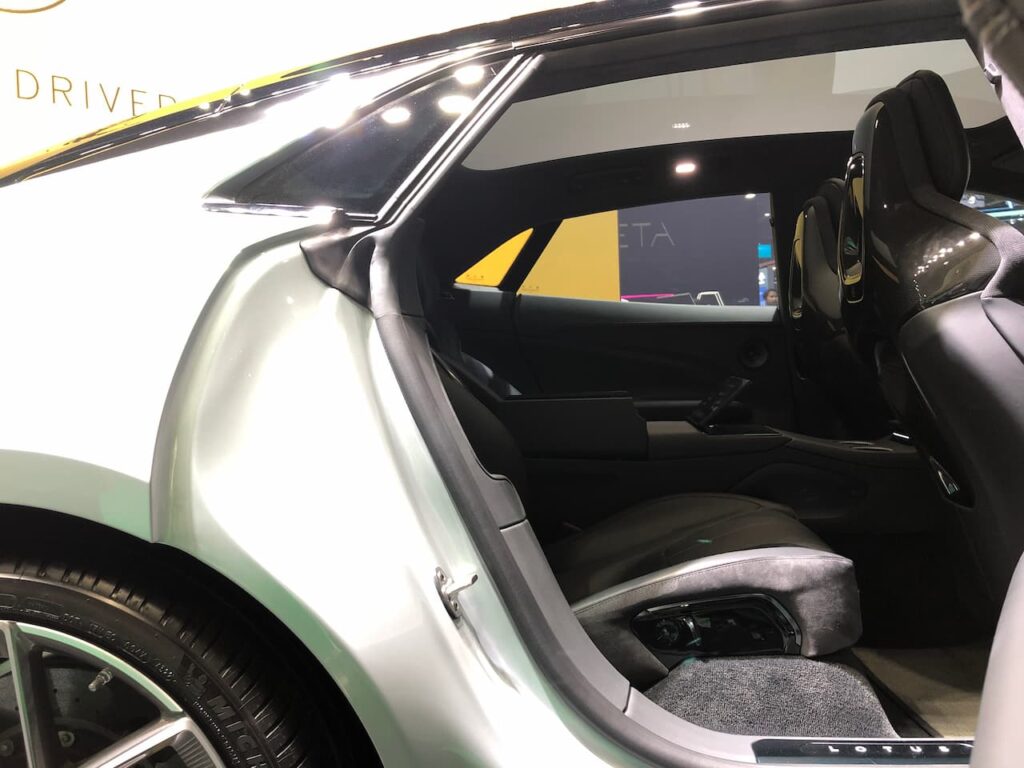
The two individual seats have a reclining backrest with a good level of adjustability. I noticed that it was possible to adjust the front passenger seat from here, and while no Emeya customers are likely to be chauffeur-driven, whoever sits in the back will appreciate this convenience. The outside visibility was good despite the strong upward belt line.
The rear seats, just like the front ones, kept me tucked in with good bolstering. I was surprised to find there was a massage function in the back, too. I had adequate legroom and knee room. The under-thigh support could’ve been better, though. The cushion was electrically extendable, but I would’ve preferred it in a slightly raised position. The floor being a bit high didn’t help here.
Driving impressions
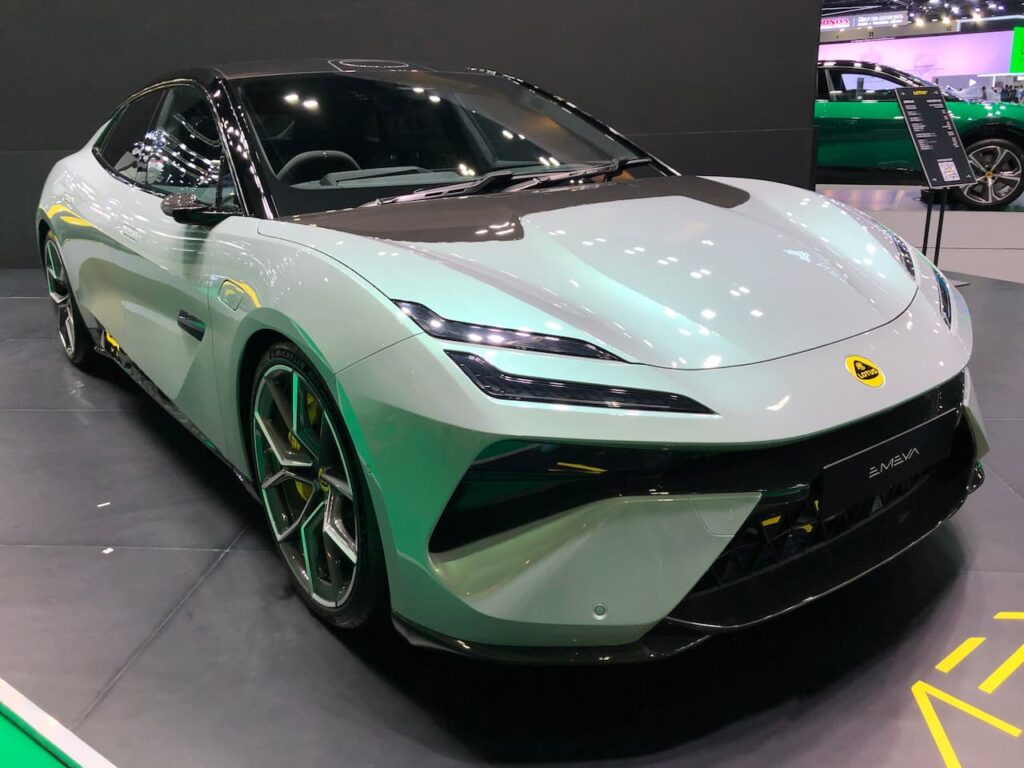
Lotus hasn’t fully disclosed the specifications of the Emeya, but I know that it sits on the same platform as the Eletre. Given the similarities with the SUV, I expect it to be offered with the same dual-motor powertrains that enable an AWD drivetrain layout, one configuration with 450 kW (603 hp)/710 Nm (524 lb.-ft.) rating, and the other with a 675 kW (905 hp)/985 Nm (726 lb.-ft.) rating.
Lotus has confirmed that the top-end Emeya’s dual-motor powertrain allows it to zoom to 62 mph from a standstill in 2.78 seconds and clock a top speed of 159 mph. Those are impressive figures, but after seeing the initial Eletre reviews, I’m more interested in knowing how smoothly it speeds up, how precisely it attacks the corners, and whether it offers an effortless drive.
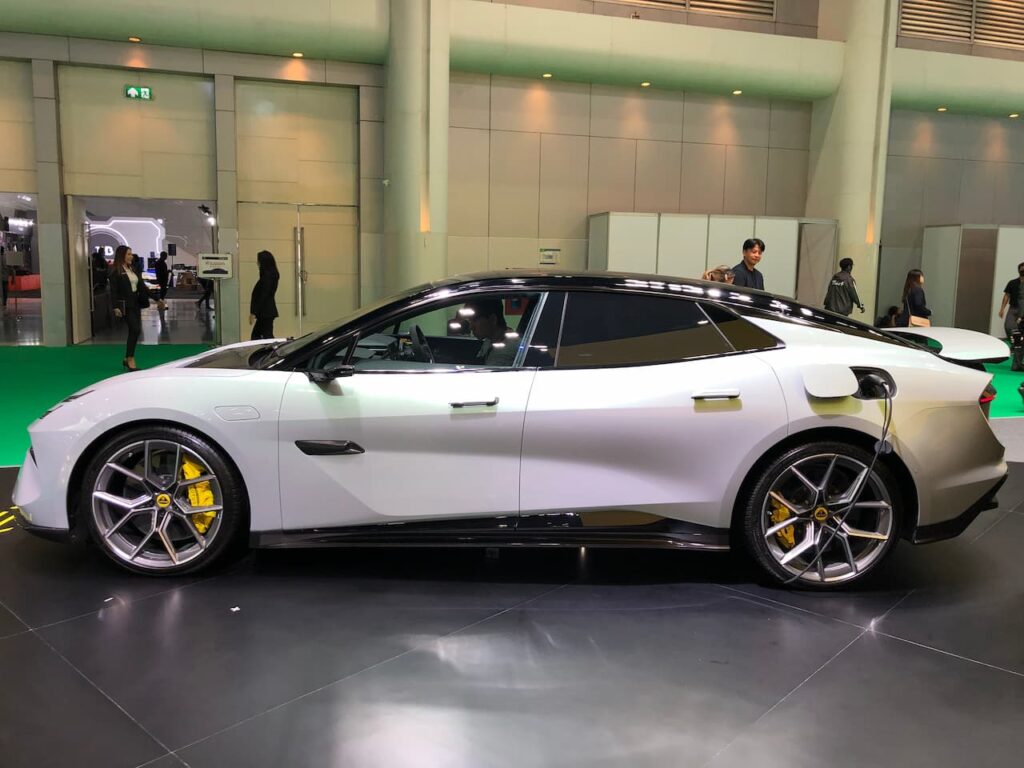
Select international publications sampled a prototype powered by the dual-motor powertrain producing 675 kW (905 hp) and 985 Nm (726 lb.-ft.) of torque and sporting winter tires in Finland in early 2024. From what we know, the Emeya’s suspension offers superb handling, inspiring the driver to push it to its limits. The suspension absorbs bumps effortlessly, offering great ride quality, too. The car doesn’t feel out of grip even on snow-clad roads.
The Emeya’s electric motors get their juice from a 102 kWh battery pack, which I expect to give it an EPA-estimated range of over 300 miles in the standard configuration.
Price
I expect the Emeya to start at around USD 90,000. The Tesla Model S rival has been confirmed to be released in the U.S. as a MY2025 model.
TopElectricSUV says
The Lotus Emeya features a sporty yet quirky exterior alongside an opulent interior that offers great levels of space and comfort. I’ll reserve my conclusive opinion until the prices come out, but for now, it feels like a promising Tesla Model S alternative.
Lotus Emeya FAQs
What is the Lotus Emeya’s release date?
The Lotus Emeya will likely begin arriving at U.S. dealerships by early 2025.
What will be the Lotus Emeya’s price?
The Emeya’s prices could start at around USD 90,000.
Which cars will be the Lotus Emeya’s rivals?
Porsche Taycan, Audi e-tron GT, Tesla Model S, & upcoming Polestar 5.
